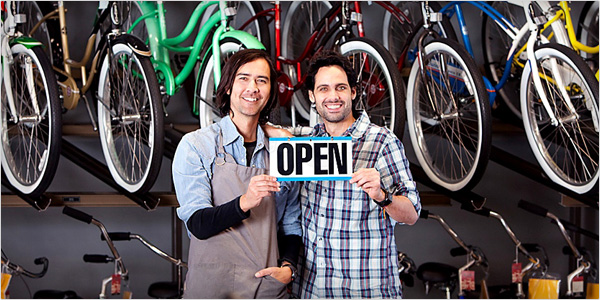Company leaders think their customer service is better than it is. According to a NICE inContact study, consumers rated customer service 17 percent lower on average than businesses rated their own success in meeting customer needs. “Less than half of consumers are satisfied with their experience, whereas more than half of businesses say they are doing well,” the study found.
The NICE inContact study focused on 10 customer experience channels that include everything from traditional phone support to self-service, email, chat, social media and more. According to the study, “The research demonstrates a significant disconnect in how businesses perceive their customer service channels are performing and how consumers actually feel about the level of service they are receiving.”
Here is the point. We cannot determine if we are providing good customer service. Only our customers can. The customer is the judge and jury when it comes to rating our customer service. It is the customers’ perceptions that determine if we’ve met or exceeded their expectations – or fell short of them.
So, what is a business to do? First and foremost, understand who your customer is, what channels they prefer, what are the key drivers for the most positive customer experience based on their expectations. Does it make a difference? Not all customers are the same, and there is a big difference between what businesses think customers want versus what consumers say. And, in order to meet, or exceed, expectations when it comes to customer service, you must deliver an experience that is in line with the customer’s expectations, not yours.
With that in mind, below are a few differences between business perceptions and customers’ expectations that can be found in the NICE inContact study:
Speed Counts
Here is something both customers and business agree on. It’s no surprise that the phone remains the No. 1 way customers want and expect support. However, customers are happy to consider alternatives. The study states that “Speed is the highest priority for both customers and businesses.” Customers want their questions answered and problems solved in the fastest way possible. And, companies want the same for their customers. Whether it be a self-service channel, the phone or any other channel of support, companies want to resolve their customers’ issues with completeness and speed.
Self-Service
Self-service options are more and more popular with customers (up to 50 percent of the time). Customers are getting used to doing things themselves, and many prefer it. They want an easy way to get an answer, either on a simple Frequently Asked Questions page on a website, a video tutorial on YouTube, or any other way they can get information without having to talk to an agent. It’s not that they don’t want to talk to agents. They just want this option first. Why? Because it’s easy. Businesses know this, yet the study indicates that businesses report an overall success rate with their self-service channels of only 52 percent. Customers rate it even lower, saying that the same businesses are only successful about 39 percent of the time. Not a huge gap, but enough that businesses should be concerned and pay attention.
The Difference Between Business and Consumer Preferences
Everyone wants the best service and support. Yet a business customer dealing with a B2B business and a consumer dealing with a business in the B2C world may have different expectations. Overall, business customers are happier than consumers with the customer service they receive.
- Businesses perceive that convenience is the top success driver, assuming consumers get the information they need. Consumers would rather have a quick answer. Note that convenient and quick are not the same.
- 79 percent of businesses feel that they provide personalized service compared to 59 percent of consumers.
- 81 percent of businesses feel they provide the most complete information versus 56 percent of consumers.
- While both business customers and consumers prefer the phone for support, 39 percent of consumers like the option of online chat versus just 16 percent of businesses who prefer to offer chat.
- Businesses like it when customers contact them via phone or email. Consumers are willing to be contacted via email but are less likely to allow phone calls.
If you want your customer service to be as good as you think it is, you must understand your customers. Survey them. Talk to them. Ask them what you can do better. Deliver on their expectations (not yours), and turn your satisfied customers into customer evangelists!
- Why Your Customer Service Isn’t As Good As You Think It Is - October 9, 2017
- How To Create A “We’ve Been Expecting You” Service Experience - April 7, 2017
- Seven Lessons From A Moving Company: How Service Leads To Sales - March 24, 2017


